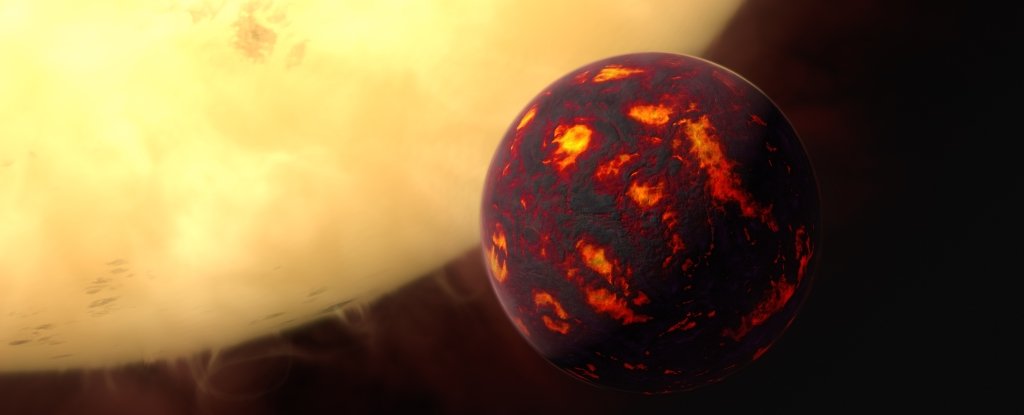Products You May Like
There are countless exoplanets in the Milky Way, but some are more hardcore than others. Take a type known as hot super-Earths. These planets are nuts. Imagine a rocky world like Earth, but up to 10 times more massive; now zoom it in so close to its star, it takes just 10 days or fewer to orbit.
Such planets aren’t just hot. Their close proximity to the host stars makes them scorching hell-worlds, thought to be stripped of an atmosphere by stellar radiation and winds, their surfaces awash with oceans of molten lava at temperatures of at least 850 Kelvin.
This is pretty amazing enough, but some of these planets have an additional mystery. A few of them are extremely bright with light reflected from their host stars, a property known as albedo.
Some are even brighter than Earth, reflecting up to 50 percent of the light that hits them from their host star (Earth reflects about 30 percent of the Sun’s light) – and planetary scientists don’t know what could be causing the brightness.
“You’d expect these lava planets to be sort of charcoal balls orbiting in space – very dark, not very bright at all,” said planetary scientist Zahra Essack of the Massachusetts Institute of Technology’s Department of Earth, Atmospheric, and Planetary Sciences, lead author of new research into the phenomenon. “So what makes them so bright?”
Spoiler: we still don’t know. But we now have a clearer idea of what isn’t behind the high albedo of these lava ocean exoplanets. By creating a bunch of lava and volcanic glass in the lab, and measuring the reflectivity of the two materials, scientists have ruled these out as a source of extra brightness.
First, the team selected their materials – feldspar and basalt, two minerals common on Earth and the Solar System’s other rocky planets, with well-characterised properties.
Using the foundry at the MIT’s Department of Materials Science and Engineering, Essack and her colleagues melted their feldspar. Unfortunately, it cooled too quickly to obtain a measurement of reflectivity in its molten state, but the resulting volcanic glass proved to be very useful. The team took detailed measurements, shining light on it from multiple angles and studying how that light reflected.
For the basalt, the team obtained samples of basalt glass from Syracuse University’s Lava Project, and performed the same detailed measurements of its reflectivity.
To obtain reflectivity measurements for molten lava, the team pored through previous studies. Then, they calculated the albedo for a range of hot super-Earth configurations, from purely molten lava to purely volcanic glass, with a range of combinations in between.
Just as expected, the albedo of a planet whose surface consists of these materials was pretty low. The absolute upper limit was an albedo of about 0.1 – reflecting just 10 percent of the host star’s light.
“This is quite dark compared to Earth, and not enough to explain the brightness of the planets we were interested in,” Essack said.
But this means the team can now turn their attention to other possibilities. We know, for instance, that Venus has a really high albedo, reflecting about 70 percent of the sunlight that hits it, because of its thick atmosphere. Hot super-Earths were considered unlikely to have atmospheres, but maybe we just don’t know enough about them.
“We still have so much to understand about these lava-ocean planets,” Essack said.
“We thought of them as just glowing balls of rock, but these planets may have complex systems of surface and atmospheric processes that are quite exotic, and not anything we’ve ever seen before.”
Future hot super-Earth candidates identified by the TESS exoplanet-hunting telescope could help us better understand these strange and mysterious worlds.
The research, meanwhile, has been published in The Astrophysical Journal.
